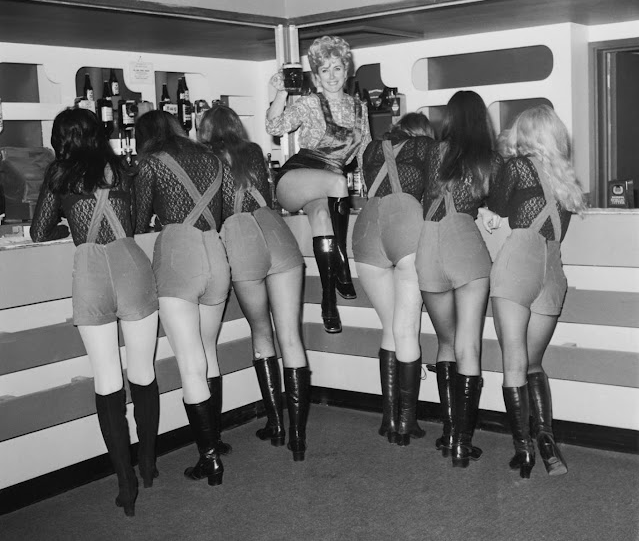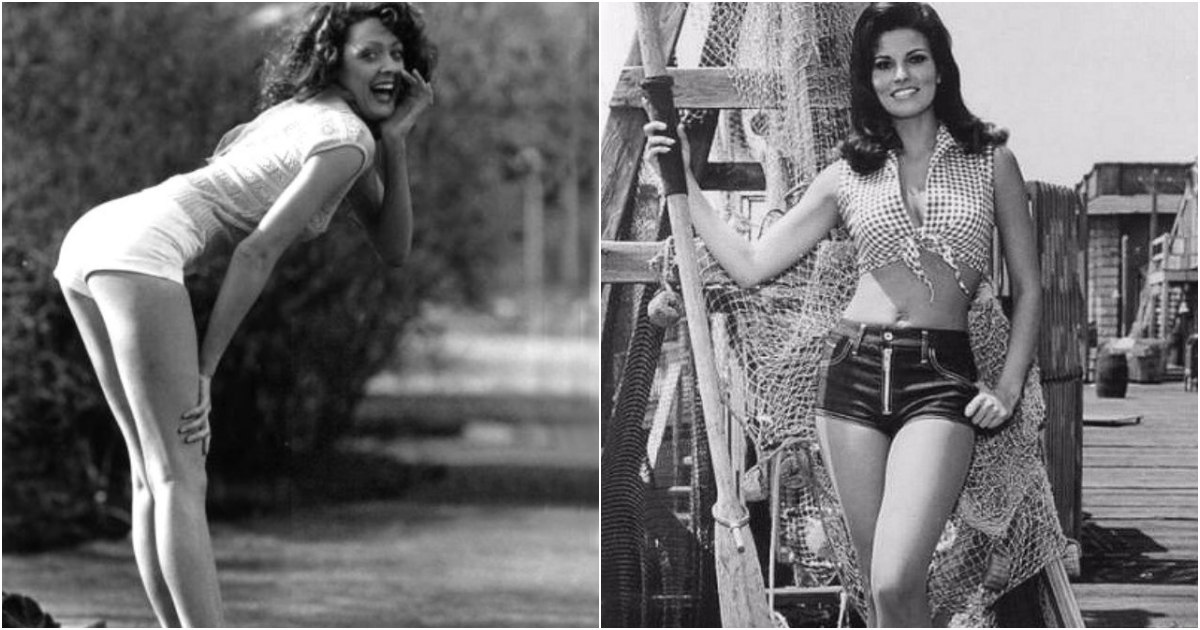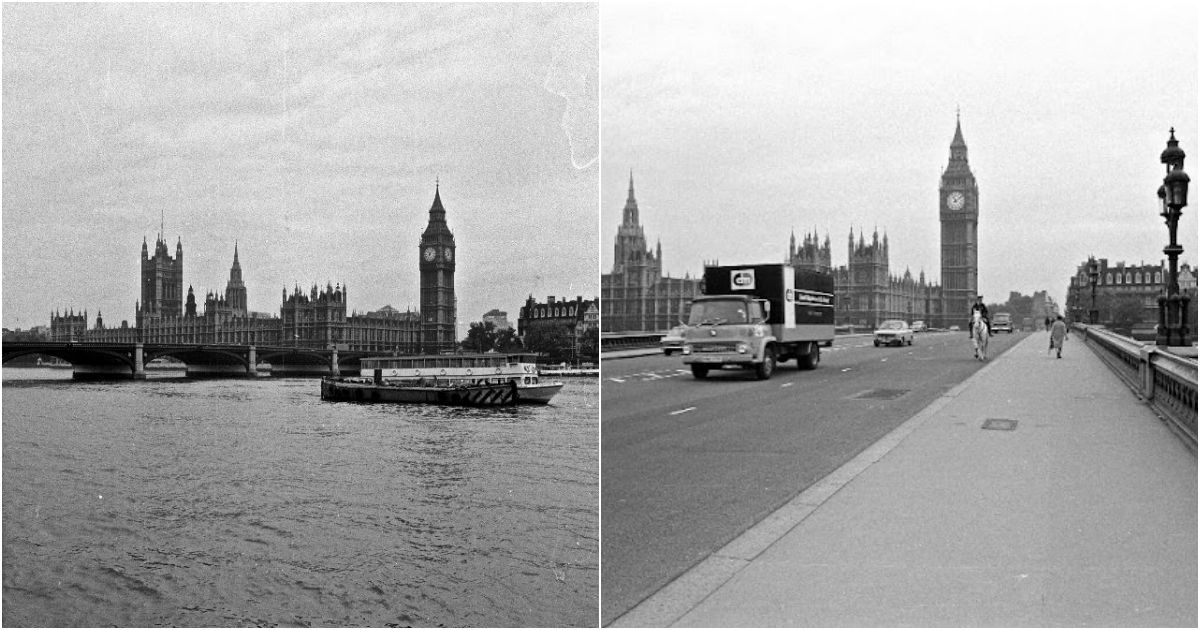These incredible images show locations throughout England's famous old capital as they looked both in history and today. Released by the Museum of London, the composites create a ghostly visual of the city old and new, and include such landmarks as Covent Garden, Tower Bridge and Piccadilly Circus.
![]()
|
| The exterior of the completed Gloucester Road Station on the underground Metropolitan and District Railway, which was opened on 3rd October 1868. From a series of 64 photographs taken in the late 1860s by Henry Flather to document the construction of the railway from Paddington to Blackfriars via Kensington, Westminster and the new Victoria Embankment. Construction was by the 'cut-and-cover' method used to build the first underground railways before the development of the tunneling shield by James Henry Greathead . The first tunneled, or 'tube', railway in London was the City & South London Line, which opened in 1890. |
![]()
|
| A street seller of sherbert and water is photographed on Cheapside completely unaware of the camera. Paul Martin was the first photographer to roam around the streets of London with a disguised camera taking candid pictures such as this solely for the purpose of showing 'life as it is'. |
![]() |
| View of Duncannon Street in the City of London decorated with bunting and banners for the coronation ceremony of Edward VII. Today the city of London has plans for large business high rises. |
![]() |
| People and traffic in Oxford Street around the turn of the 20th century. Christina Broom at this time photographed London street scenes to reproduce as postcards for sale. |
![]()
|
| A view of Bow Lane, off Cheapside in the City of London, looking south to the crossing with Watling Street and St. Mary Aldermary in the middle distance. 'Ye Olde Watling' tavern was originally built just after the Great Fire of 1666. George Davison Reid supported the Society of Antiquaries of London, which promoted the study of London's architecture, and was interested in photographing older architecture and locations. He took this photo of Bow Lane in the late 1920s. |
![]() |
| George Davison Reid took this photo of Blackfriars station entrance from outside 179 Queen Victoria Street. The station was originally called St Paul's and was opened by the London, Chatham and Dover Railway in 1886. Above the station were the premises of Oppenheimer Son and Co Limited, which manufactured pharmaceutical specialities. The Times newspaper was also based here in Queen Victoria Street. A decade or so after Reid photographed this exterior, the station was bombed in the Blitz of 1940 and largely destroyed. The offices of The Times newspaper were also hit. |
![]() |
| Street scene at Covent Garden with underground station and horse and cart in the background. George Davison Reid photographed activity in the marketplace from opposite Covent Garden Underground station on Long Acre. A police constable was often needed to control the congestion of the horses and carts and increasing numbers of motorised vehicles. The long established market place was under pressure to move. The congested facilities were described at the time as 'altogether inadequate to the necessities of the trade'. However, the fruit and vegetable market did not relocate until 1973. |
![]() |
| A view of the forecourt of the Southern Railway's terminus at London Bridge. This was the oldest railway terminus in London, having been built for the line linking London and Greenwich in 1836. The double-decker bus on the right belongs to the London General Omnibus Company which was, in 1933, to become part of the London Transport System. |
![]() |
| The pressure to build upwards is coming from demands on the Greater London Assembly and local authorities to come up with more housing at a time of very high land prices. Pictured here is the west side of Tower Bridge showing London as it is now and back in the 19th Century. |
![]() |
| This photograph shows Byward Street near Tower Hill, looking west with the church of All Hallows by the tower on the left and the former Mark Lane Underground station on the right. Reid photographed the streets and buildings of London and the activity in them in the 1920s and 1930s. |
![]() |
| Charing Cross Road is renowned for its specialist and second-hand bookshops. Wolfgang Suschitzky was attracted by the extensive array of second-hand bookshops and teahouses, and the crowds that flocked to them. The resulting series of photographs are amongst Suschitzky's most acclaimed work. |
![]() |
| A boy is seen shining his shoes outside the Tea Room at Victoria station in 1950. A group of porters can be seen with their trolleys waiting to help travellers with their luggage. |
![]() |
| This image shows Piccadilly Circus, Coronation day, June 1953. Crowds gather to witness the Coronation procession of Elizabeth II. The coronation went ahead in Westminster Abbey on 2 June 1953, and at the Queen's request, the entire ceremony was televised throughout the Commonwealth, and watched by an estimated twenty million people. |
![]() |
| People sunbathing in Hyde Park with Marble Arch and the Odeon cinema in the background. The attendant is selling tickets for the deckchairs which are available for hire in the park. The Odeon which was originally a Regal cinema, opened in 1928. The exterior of the building was made from Portland Stone and featured columns and statues however in 1964 it was thought too small and the building was demolished and a larger cinema complex was built in its place. |
![]() |
| This photograph captures the view north up Brick Lane in Spitalfields, close to the markets. Some of the textile businesses can be seen. Bengali migrants began to arrive in the area from the late 1950s onwards. |
![]()
|
| A night shot outside the Palace Theatre before an evening's performance. The Frankie Vaughan Season ran from 20 January to 16 February 1958 and included Vaughan as the headliner and artists such as Petula Clark, who was to sing her latest hits. Collins created a number of night-time photographs playing with the bright lights of the West End to record people enjoying the buzz of fifties nightlife. |



















